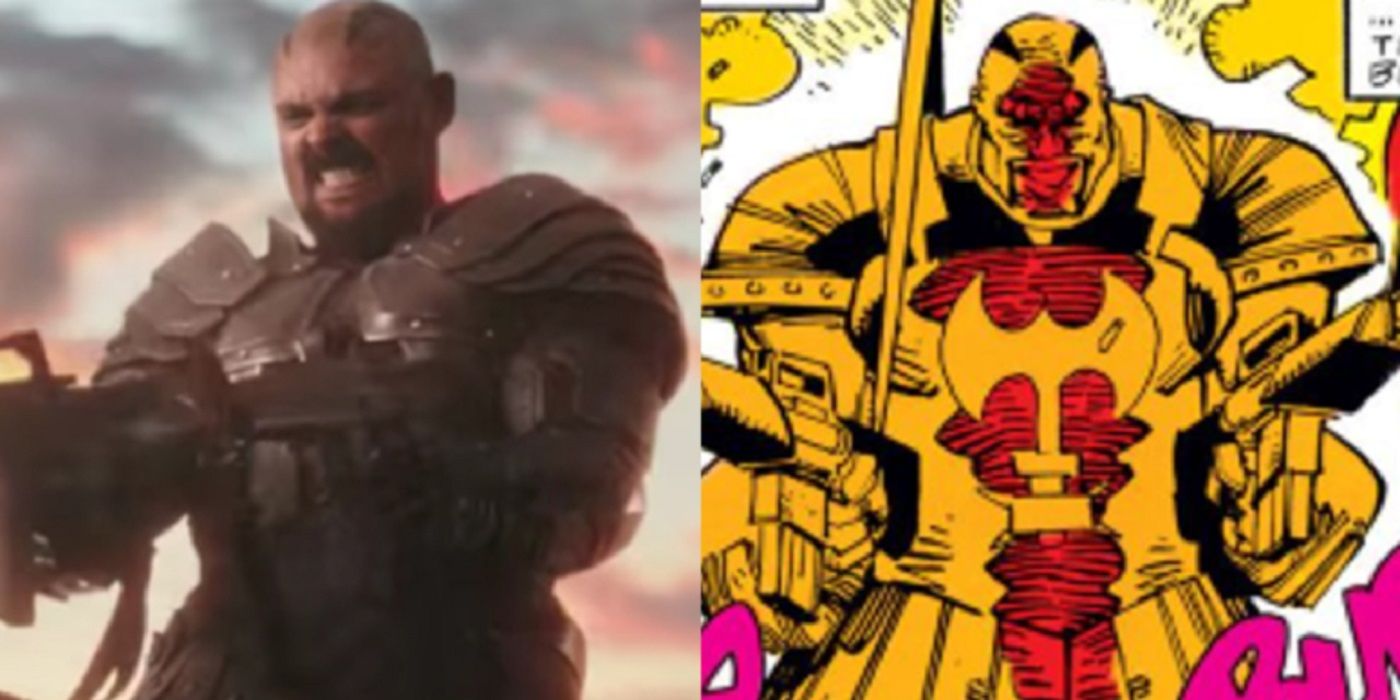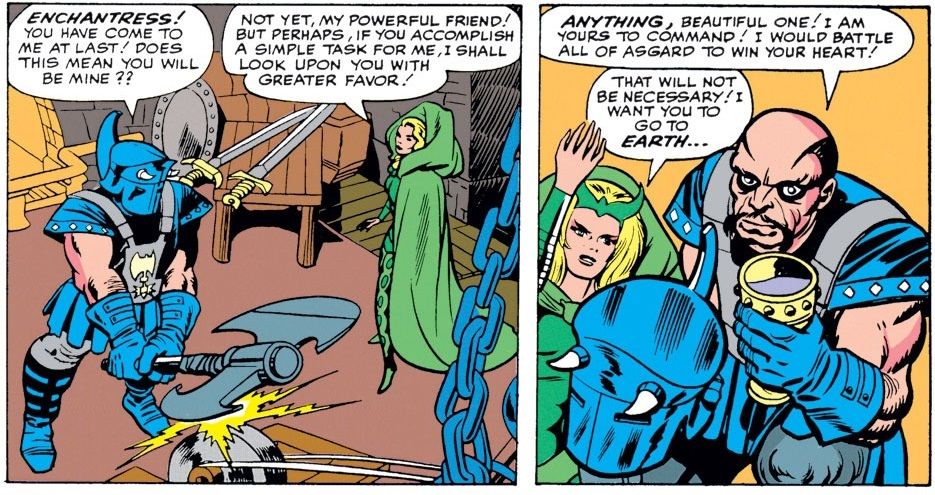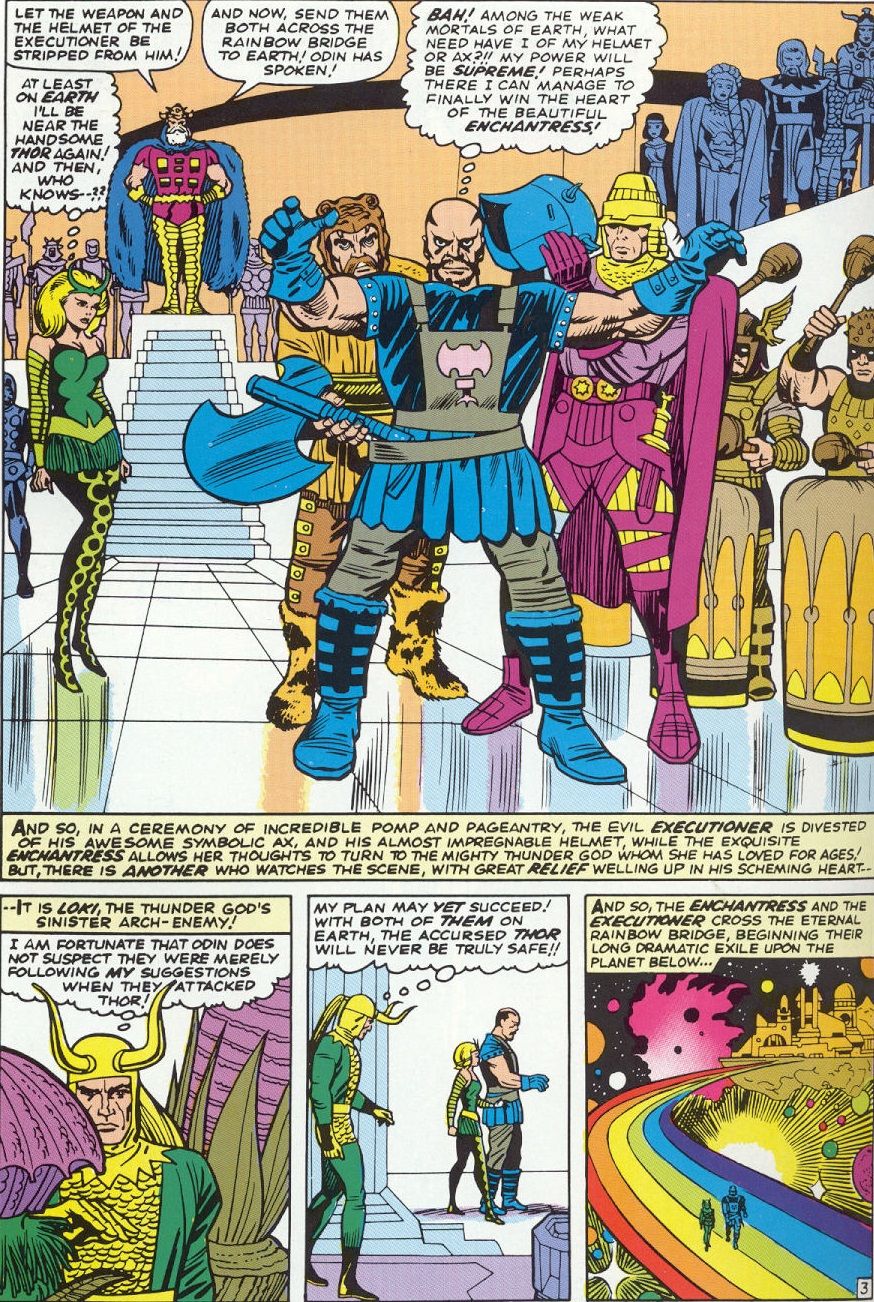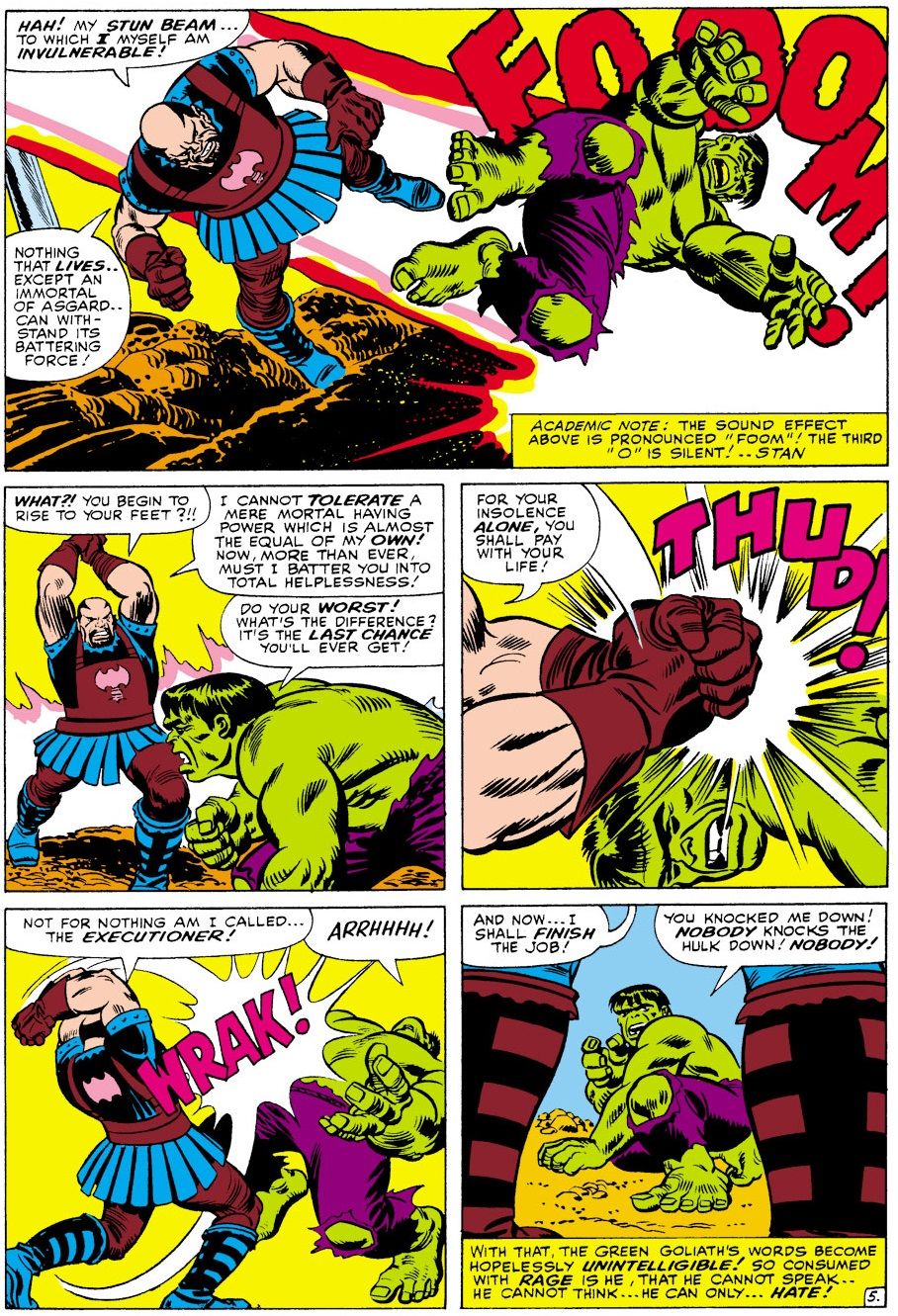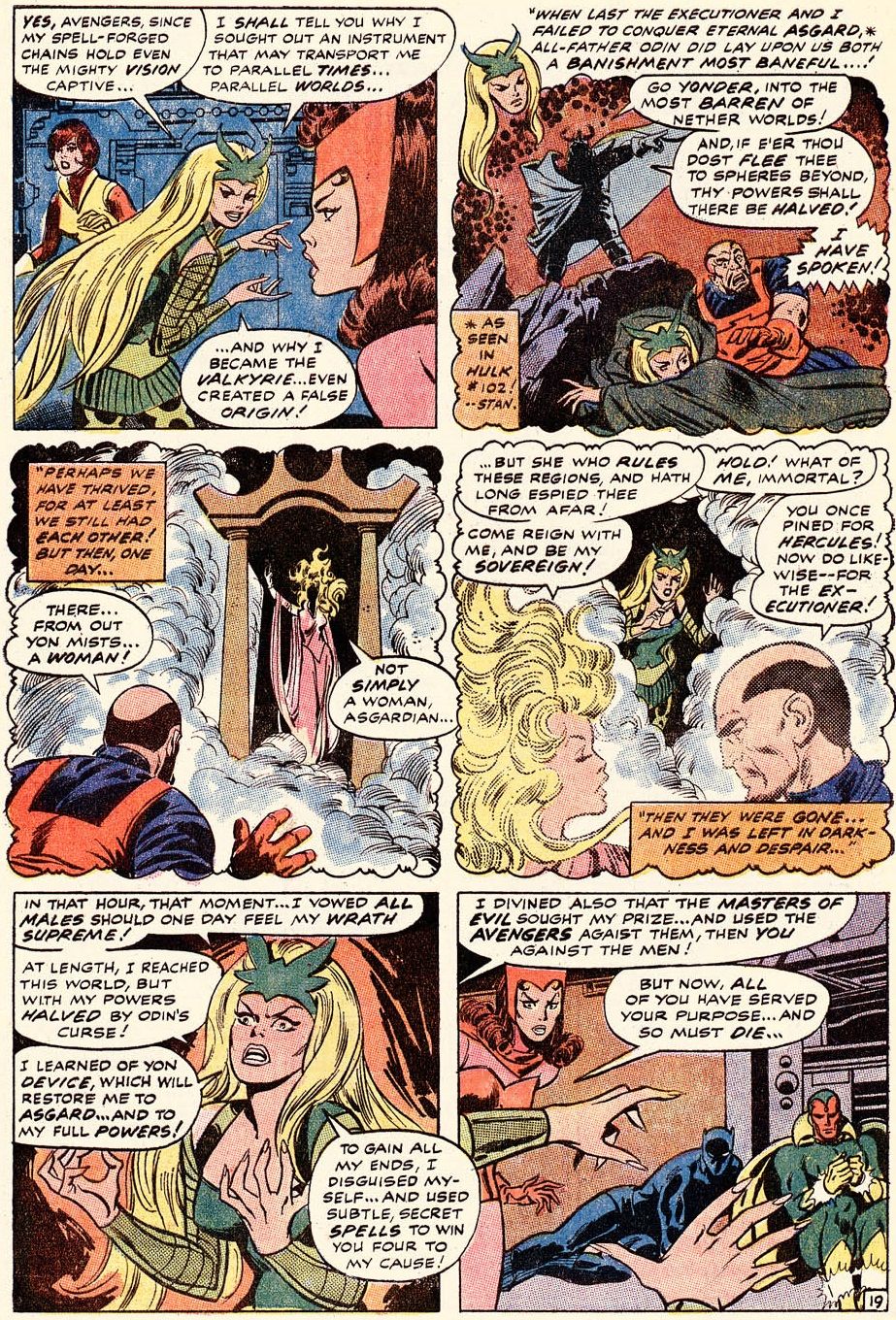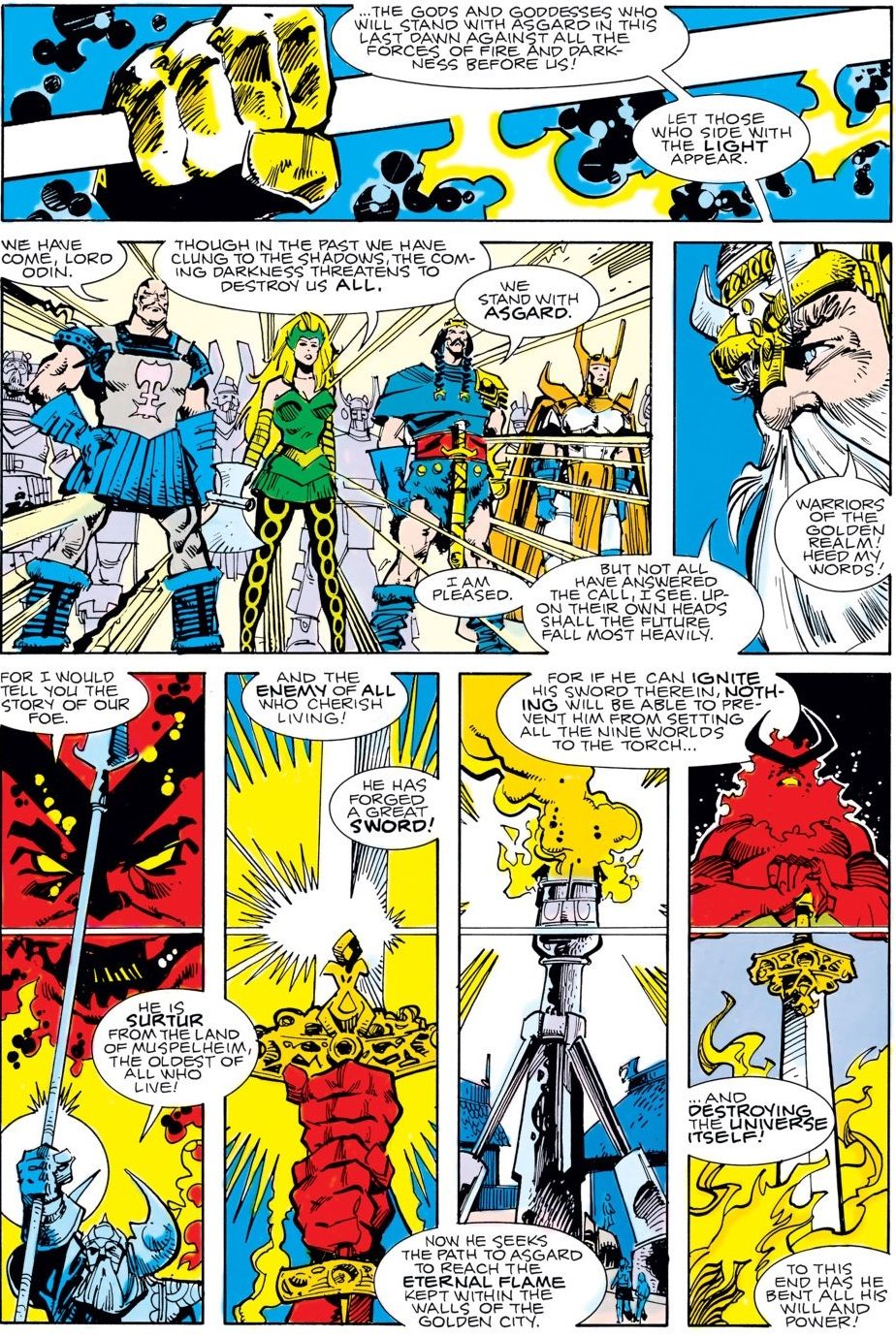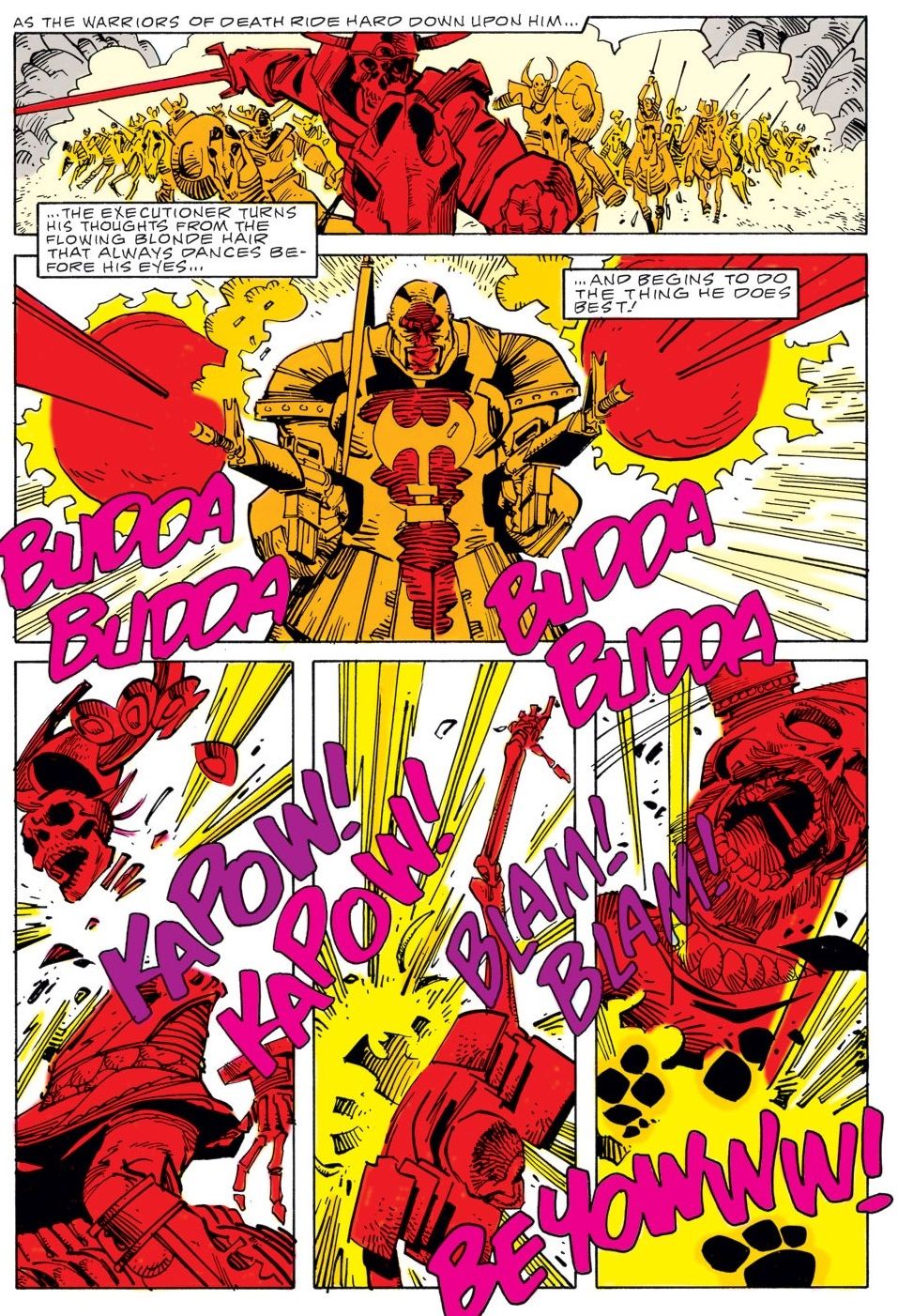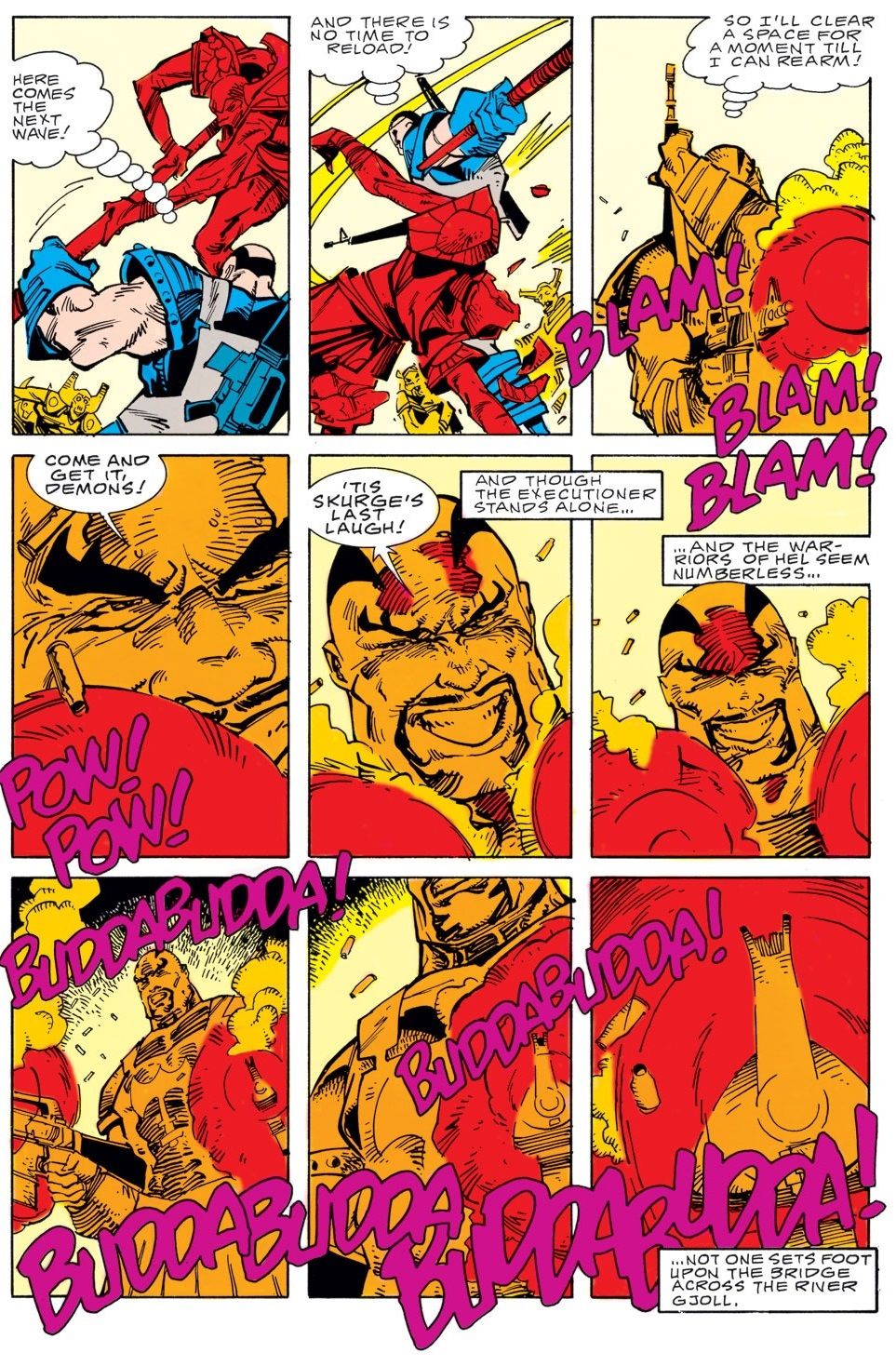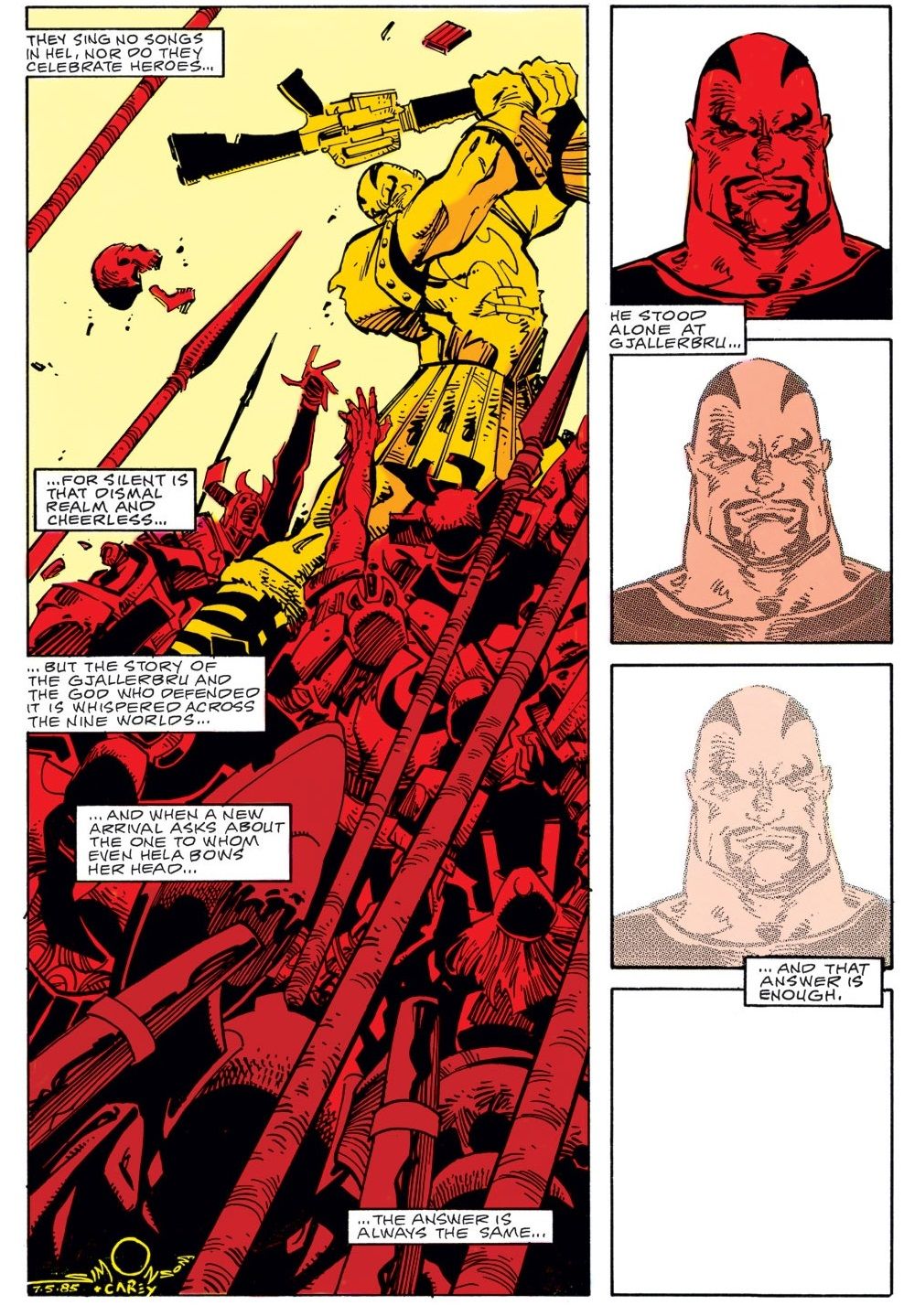WARNING: This article contains major spoilers for Marvel's Thor: Ragnarok, in theaters now.
In Thor: Ragnarok, Skurge (played by Karl Urban) is portrayed as the ultimate lackey. When Loki took over Asgard by pretending to be Odin, Heimdall had to go on the run. Skurge was more than happy to take over Heimdall's post for "Odin" (and then use the post to try to impress women and steal objects from throughout the universe, including an impressive pair of machine guns from Texas). Then, when Hela conquered Asgard and killed many valiant Asgardian warriors, Skurge not only bent the knee to his new Queen, but he even began to outright serve her as her new "Executioner." However, in the end, when the surviving citizens of Asgard were trying to escape from Hela's re-animated warriors, Skurge redeemed himself by staying behind to protect the escape of the Asgardians, even though he knew that he would die in the process. It's an impressive sequence (Urban's acting really sells the transformation of the character). However, what many viewers of the film might not know is that the scene came almost directly from one of the most acclaimed Thor issues of the 1980s! Read on to learn about the history of Walter Simonson's "He stood alone at Gjallerbru" and how it directly influenced Skurge's classic moment within the film.
RELATED: Who (and What) Doesn’t Survive Thor: Ragnarok
In the early days of Marvel Comics, Stan Lee turned the comic book world upside down with his rich characterizations for many of his heroes in his comic book series. They had complex personalities in a way that was noticeably uncommon for superhero comics of the era. However, as well developed as the superheroes were, some of the villains tended to be a bit more of the one-note variety. Even there, though, their one note was still typically one note more than other comic book villains had, but it was still noticeable how much the characters stuck to their lane. Skurge the Executioner was introduced in Journey Into Mystery #103 (by Jack Kirby, Stan Lee and Chic Stone) as a guy who would do anything to get a little attention from Amora the Enchantress (who made her debut in that issue, as well)...
Executioner and Enchantress quickly pivoted to becoming recurring Avengers villains as part of the Masters of Evil (joining the Radioactive Man as the Thor foe representative in the group, with Baron Zemo being Captain America's foe representative and the Melter and Black Knight being Iron Man's foe representatives - yes, Iron Man's very famous rogues, the Melter and Black Knight. They somehow did not make it into any of the Iron Man films, but that was surely just an oversight) but still, Skurge's personality was simply "the guy with the awesome enchanted ax who serves Enchantress because he's obsessed with her"...
He was about as pure of a lackey as you could get.
RELATED: Ragnarok’s Waititi Tried To Break Thor to Save the Franchise
There were only a handful of issues where he moved beyond that role, including the bizarre story in Tales to Astonish #77 (by Stan Lee, Jack Kirby and John Romita) where Skurge traveled to the future to conquer the future and ends up running afoul of a time-traveling Hulk (the story makes no sense and has no real conclusion)...
And then he also briefly became the lackey for a different beautiful woman in Avengers #83 (by Roy Thomas, John Buscema and Tom Palmer)...
Skurge's betrayal leads to Enchantress manipulating the female superheroes of the Marvel Universe into joining her team of female man-haters which is led by the fake hero known as Valkyrie (who was the Enchantress in disguise, but Thomas quickly turned into a real new superhero in Incredible Hulk #142).
Skurge quickly returned to Enchantress' side in Defenders #4 and goes back to his lackey role. That all changed with Walter Simonson's run on Thor.
RELATED: Eggs-Guardian: 15 Thor: Ragnarok Easter Eggs You Totally Missed
It all started with Thor #350, as Simonson was kicking his epic Surtur storyline into high gear. The fiery demon was set to destroy all of Asgard, so Odin turned to every Asgardian that he could to help in the fight, and with their very home at risk of being destroyed, Enchantress and Executioner agreed to fight alongside the heroes of Asgard against Surtur.
After Surtur was defeated, but Odin was presumed killed in the battle, Asgard was thrown into upheaval and everyone from the battle hung around for a while. Enchantress took a shine to Heimdall and tried to seduce him in Thor #360. Skurge came upon them and Enchantress mocked him and told him never to get in the way of her and another man again. A dismayed Skurge decided to then join Thor on a mission to take his mind off of the Enchantress. The evil Dark Elf, Malekith, had trapped some human souls in Hel and Hela refused to release them. So Thor and Balder and a group of other Asgardian warriors decided to head to Hel to rescue the humans (taking with them some machine guns that they had acquired during a recent mission on Midgard/Earth).
During the mission, Hela's minions tried to manipulate each of the members of Thor's party, including Skurge. They almost tricked him into staying behind in Hel by one of Hela's minions appearing to Skurge as Enchantress. Balder, though, let him know that it wasn't the real Enchantress and Skurge knew that Balder never lied. In an act of rebellion against Hela for treating him this way, he sacrificed his ax to destroy Hela's ship, which she planned to use on Ragnarok. His actions helped delay Ragnarok from occurring.
So, in Thor #362, Thor, Balder, Skurge and the rest of the warriors now had the humans with them and were headed for the Gjallerbru bridge, which is the exit out of Hel. However, Hela's army of dead warriors were on their tail. Thor, who had been badly injured in a fight with Hela in the previous issue, decided that he will stay behind to cover the escape of the others. Skurge then knocked him out from behind! The warriors assumed that he was returning to his normal, evil self, but Skurge explained to Balder that he was tired of being laughed at for being a lackey. He noted that he died a little bit inside every time people laughed at him and now he basically felt dead inside, so he might as well do something heroic before he died for real. So he volunteered to cover the escape. With his ax gone, he borrowed a few machine guns and then waited for the legion of the undead to attack and what followed was one of the most breathtaking pieces of sequential storytelling from the entire decade (letterer John Workman also did his typical tremendous job on the lettering - the special effects were so visceral. Even Simonson seemed to realize how good it was, since he signed the final page...
Now, this is comics, so of course later writers have brought Skurge back for occasional stories, but for the most part, this story has been seen by everyone as so iconic that this has generally been treated as Skurge's final farewell as a character, which is a rare tribute in the world of comics (where no decent character can stay unused for too long). The film nicely translated the scene into cinematic glory.

